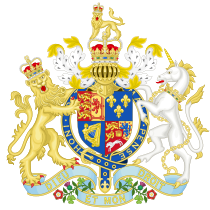Hogarth’s Act 1735, formally known as the Engraving Copyright Act 1735 (8 Geo. 2 c. 13) is an Act of the Parliament of Great Britain passed on 25 June 1735, giving copyright protections to the producers of engravings. William Hogarth’s name became associated with the Act because of the painter and engraver’s lobbying of Parliament for greater legal control of the reproduction of his and other artists’ work after the success of his A Harlot’s Progress (1731–1732) resulted in the production of numerous pirated copies.[1]
The Engraving Copyright Act distinguished between those works that involved original designs and those that did not, making an implicit distinction between artists and “mere” craftsmen. Soon, however, parliament was persuaded to extend protection to all engravings, a logical progression that was mirrored a century later when copyright was again extended at first to “special” and then to all photographs.[2]
Hogarth’s Act was repealed by sections 36 and 37(2) of, and schedule 2 to, the Copyright Act 1911 (c.46).

